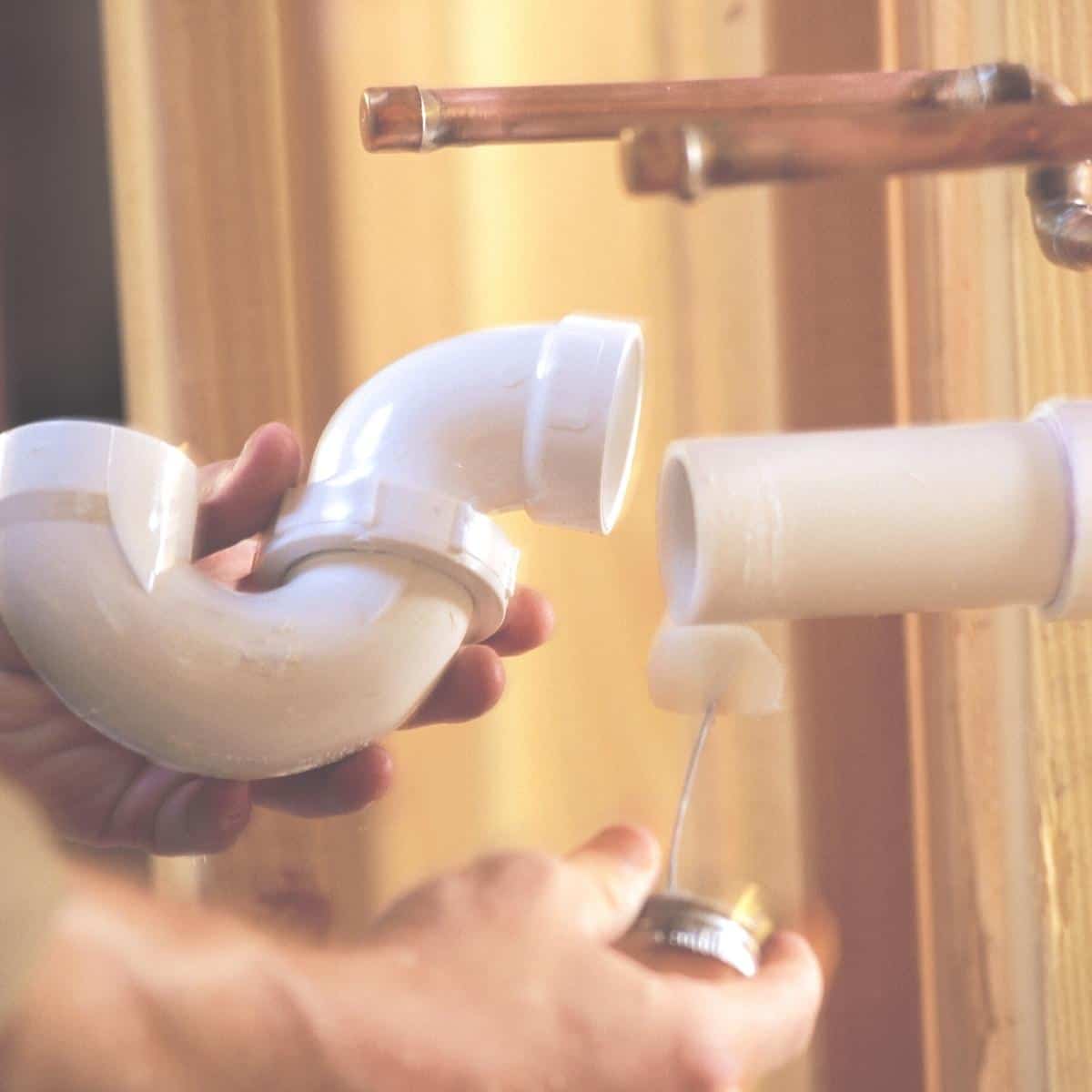Preparing for Painting

A clean surface is essential for a successful paint job. Dirt, grease, and grime will prevent the paint from adhering properly, leading to a poor finish and a shorter lifespan.
Cleaning Plastic Pipes
Thoroughly cleaning the plastic pipes is the first step to ensure the paint adheres properly. Here’s a step-by-step guide:
- Gather your supplies. You’ll need a cleaning solution, a scrub brush, a cloth, and a bucket of clean water.
- Choose your cleaning solution. A mild detergent or a solution of baking soda and water is suitable for most plastic pipes. For heavily soiled pipes, you can use a stronger cleaner like trisodium phosphate (TSP).
- Apply the cleaning solution. Apply the cleaning solution to the pipes with a scrub brush or a cloth. Be sure to scrub all areas thoroughly, including any crevices or corners.
- Rinse the pipes. Rinse the pipes thoroughly with clean water to remove all traces of the cleaning solution.
- Dry the pipes. Allow the pipes to dry completely before proceeding to the next step.
Types of Paint for Plastic Pipes
Several types of paint are suitable for plastic pipes in a bathroom environment. These include:
- Acrylic latex paint is a popular choice for plastic pipes because it’s easy to apply, dries quickly, and is water-resistant.
- Epoxy paint is a durable and moisture-resistant option that’s often used in high-traffic areas.
- Alkyd paint is a type of oil-based paint that provides a durable finish.
Oil-Based vs. Water-Based Paint
Both oil-based and water-based paints have advantages and disadvantages:
Oil-Based Paint
- Advantages: Offers a durable, long-lasting finish that is resistant to moisture and mildew.
- Disadvantages: Takes longer to dry, produces strong fumes, and requires mineral spirits for cleanup.
Water-Based Paint
- Advantages: Dries quickly, has low odor, and cleans up easily with soap and water.
- Disadvantages: May not be as durable as oil-based paint, especially in high-moisture environments.
Safety Precautions, Painting plastic pipes in bathroom
- Ventilation: Ensure proper ventilation in the bathroom while painting. Open windows and doors to allow fresh air to circulate.
- Protective Gear: Wear gloves, a mask, and eye protection to prevent contact with paint fumes and splashes.
- Fire Safety: Keep a fire extinguisher handy, and avoid using flammable materials like acetone or thinner for cleaning.
Painting Techniques: Painting Plastic Pipes In Bathroom

Painting plastic pipes requires careful preparation and technique to ensure a smooth, even, and long-lasting finish. The right tools and methods will help you achieve a professional look and prevent paint from chipping or peeling.
Choosing the Right Painting Technique
The choice of painting technique depends on the size and shape of the pipes, the desired finish, and your level of comfort with different tools. Here’s a comparison of common techniques:
| Technique | Pros | Cons |
|---|---|---|
| Brush |
|
|
| Roller |
|
|
| Spray Painting |
|
|
Essential Tools for Painting Plastic Pipes
- Brushes: Choose brushes with synthetic bristles, suitable for both water-based and oil-based paints. Select sizes according to the pipe diameter.
- Rollers: Opt for a short-nap roller for smoother application. Use a roller tray to load paint efficiently.
- Masking Tape: This is essential for protecting surrounding areas from paint splatters. Use painter’s tape specifically designed for plastic surfaces.
- Drop Cloths: Protect your floor and other surfaces from paint spills and drips.
- Paint Thinner: Use a suitable thinner for the chosen paint type, if necessary.
- Paint Stir Stick: Ensure the paint is thoroughly mixed before application.
Masking Tape Application
Masking tape is crucial for achieving a clean and professional paint job. Follow these steps:
1. Clean the Surface: Ensure the area around the pipes is clean and free of dust or debris.
2. Apply Tape: Press the masking tape firmly along the edges of the area you want to protect. Ensure the tape is smooth and free of wrinkles.
3. Smooth the Edges: Use a putty knife or your finger to gently smooth down the edges of the tape. This will prevent paint from seeping underneath.
4. Remove Tape: Once the paint is completely dry, remove the masking tape carefully. It’s best to remove it at a 45-degree angle to avoid peeling off paint.
Step-by-Step Guide to Painting Plastic Pipes
1. Prepare the Pipes: Clean the pipes thoroughly with a degreaser to remove any dirt, grease, or soap residue. Allow them to dry completely.
2. Prime the Pipes: Apply a primer specifically designed for plastic surfaces. This will create a better bonding surface for the paint and ensure a longer-lasting finish.
3. Apply Paint: Choose a paint suitable for plastic surfaces. For a smooth finish, apply thin coats, allowing each coat to dry completely before applying the next.
4. Remove Masking Tape: Once the paint is completely dry, carefully remove the masking tape.
5. Clean Up: Dispose of any leftover paint and cleaning materials properly.
Finishing Touches

After you’ve finished painting your plastic pipes, it’s crucial to allow the paint to dry completely before using the bathroom. This ensures the paint won’t smudge or transfer to your skin or towels, and it also allows the paint to harden properly, maximizing its durability.
Drying Time
Allowing the paint to dry completely is essential for a successful paint job. The drying time depends on the type of paint used and the environmental conditions, but typically takes at least 24 hours. During this time, avoid using the bathroom to prevent any disturbance to the drying process.
Cleaning Up Paint Spills and Splatters
While you’re painting, it’s inevitable that some paint will end up on surfaces you didn’t intend to paint. Here are the best methods for cleaning up paint spills and splatters:
- For wet paint: Use a damp cloth or sponge to wipe up spills immediately. Avoid scrubbing, as this can damage the surrounding surfaces.
- For dried paint: If the paint has dried, use a scraper or putty knife to remove it. Be careful not to scratch the surface. For stubborn paint, you can try using a paint thinner, but always test it on a small, inconspicuous area first.
Maintaining the Painted Finish
To maintain the painted finish on your plastic pipes, follow these tips:
- Regular cleaning: Clean the pipes regularly with a mild soap and water solution. Avoid using harsh chemicals or abrasive cleaners, as these can damage the paint.
- Avoid excessive moisture: Prevent excessive moisture buildup around the pipes by ensuring proper ventilation in the bathroom. This helps to prevent mold and mildew growth, which can damage the paint.
- Touch-ups: If the paint chips or scratches, use a small brush to touch up the affected areas with the original paint color.
Enhancing the Painted Finish
You can further enhance the painted finish by adding a sealant or using decorative stencils:
- Sealant: A sealant provides an extra layer of protection against moisture, scratches, and stains. Apply the sealant after the paint has completely dried, following the manufacturer’s instructions.
- Decorative stencils: Stencils allow you to create unique designs on the painted pipes. Choose a stencil that complements the overall bathroom decor and use a paintbrush or sponge to apply the paint.
Color Options and Paint Finishes
Here’s a table showcasing different color options and paint finishes suitable for bathroom plastic pipes:
| Color | Paint Finish | Features |
|---|---|---|
| White | Matte | Classic, clean, and easy to maintain. |
| Beige | Semi-gloss | Warm, neutral, and reflects light well. |
| Gray | Satin | Modern, sophisticated, and hides imperfections. |
| Blue | Glossy | Reflective, vibrant, and adds a touch of personality. |
Painting plastic pipes in bathroom – Painting plastic pipes in your bathroom can be a quick and easy way to refresh the look of your space. While you’re at it, consider giving your bathroom vanity a makeover as well! If you’re unsure whether to stain or paint your vanity, check out this helpful guide on stain or paint bathroom vanity.
Once you’ve finished your vanity project, you can return to those plastic pipes and complete your bathroom transformation.
Painting plastic pipes in the bathroom can be a great way to make them blend in with the surrounding décor. If you’re going for a sleek and modern look, consider using dark gray bathroom paint to match your fixtures. Just be sure to use a primer specifically designed for plastic before applying the paint for a durable and long-lasting finish.